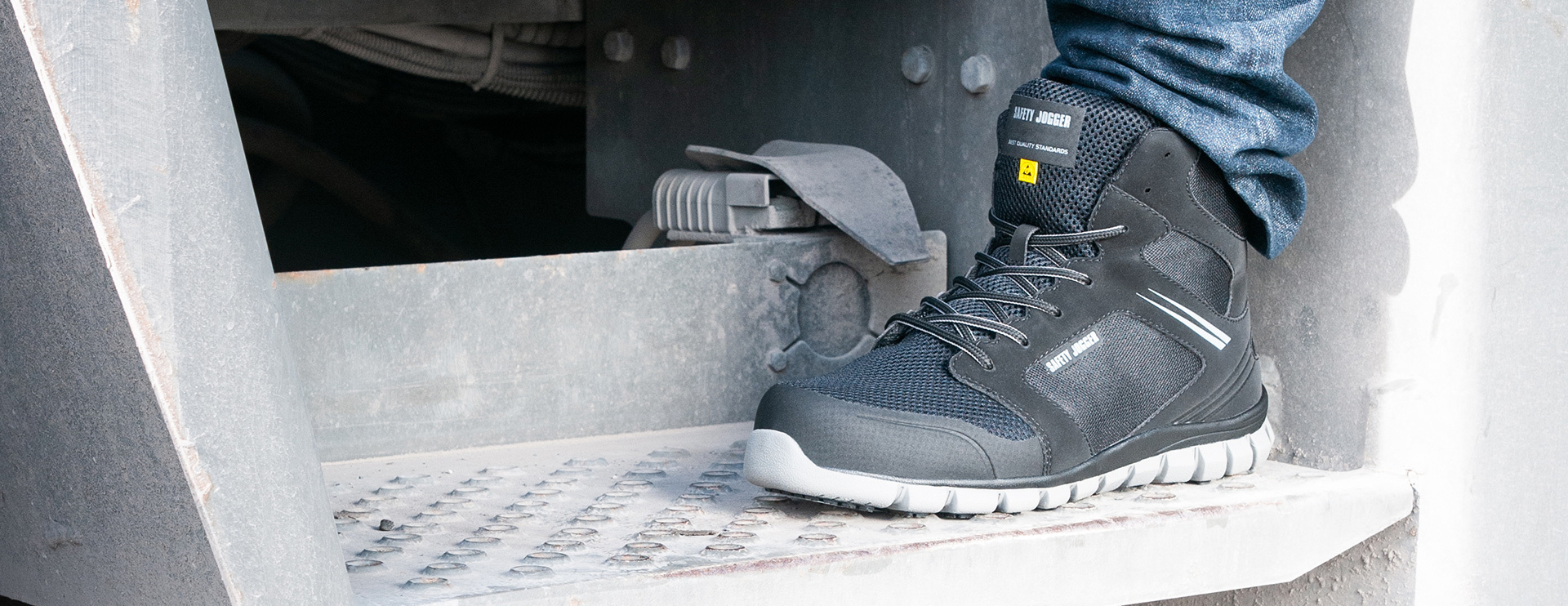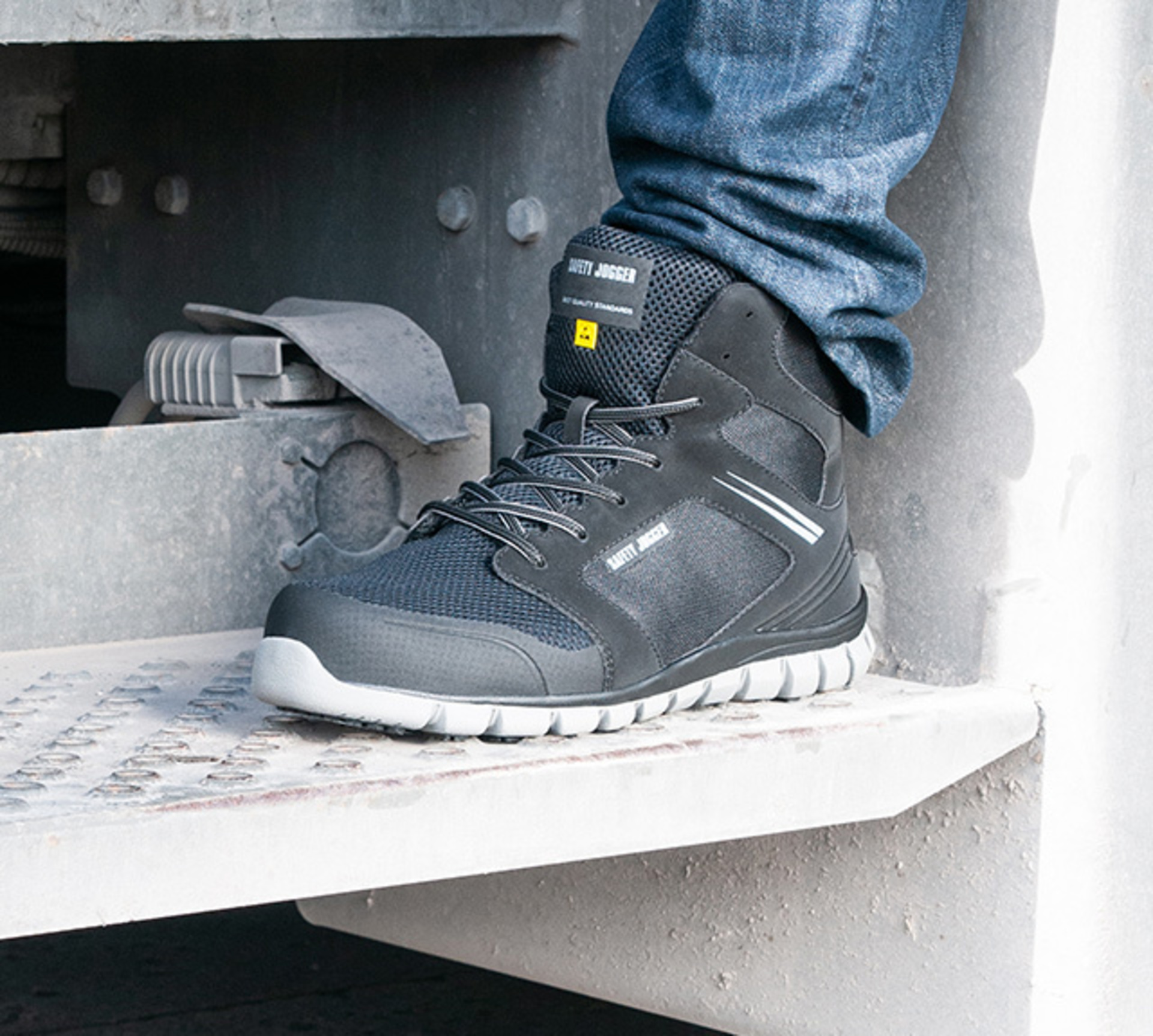ESD vs. antistatic: what is the difference?
Did you ever walk across a carpet, and got a shock when touching a doorknob for instance? Then you have experienced static energy! The energy that builds up in your body will find its way out and result in a little spark when you touch something metal. Those sparks could cause serious problems when you work in an industrial environment where solvents, fuels, etc. are available or sensitive electronic components are used.
To avoid these kinds of accidents, we can distinguish two categories of safety shoes: insulating shoes and conductive shoes. While insulating shoes completely isolate you from the ground, conductive shoes conduct electrical charges to the ground. Conductive shoes are either antistatic or featured with ESD. But what is the difference between both? We’ll explain it in the video below!
Part 1
Part 2
In summary:
Antistatic footwear has an electrical resistance between 0.1 MegaOhm and 1000 MegaOhm. These safety shoes will not allow a build-up of static energy in your body and therefore avoid sparks that could ignite a fire or an explosion. Antistatic shoes are ideal in environments where solvents and fuels are used.
ESD footwear has an electrical resistance between 0.1 MegaOhm and 100 MegaOhm, which is even lower than antistatic footwear. This means that the build-up of electrostatic charges will be even more limited and that they are discharged about ten times faster. Shoes with ESD also prevent sparks and can even protect sensitive electronic equipment.
You might also like to read

Which toe cap material is the best choice for you?
A protective toecap made according to European or ASTM standards will protect your toes from basically every injury, regardless of the material. But what materials are there and what is the difference?
Steel or composite toe
Hi-tech construction boots
It’s not exactly a secret that you no longer have to be a reckless railroad worker, with hands like sandpaper and a cigarette surgically attached to your bottom lip, to rock construction boots daily.
Construction boots
Safety features overview
A guideline to finding the perfect pair of safety shoes for your work environment! This page is an overview of all the technical features we have in our safety shoes.
Overview featuresGROW YOUR BUSINESS & BECOME A DEALER
Safety Jogger is worldwide and always looking for people who trust our brand as much as we do! We have a team of expert's ready for you to help with questions about our brand, technologies or reselling our products. So, don’t hesitate to fill in this form, we usually get back to you within a day!
Further information?
Fill in the form and we’ll get in touch!

























